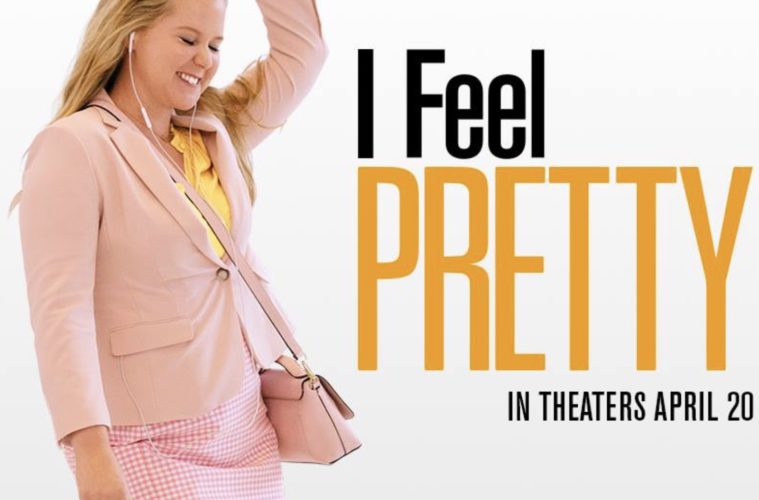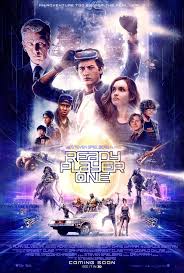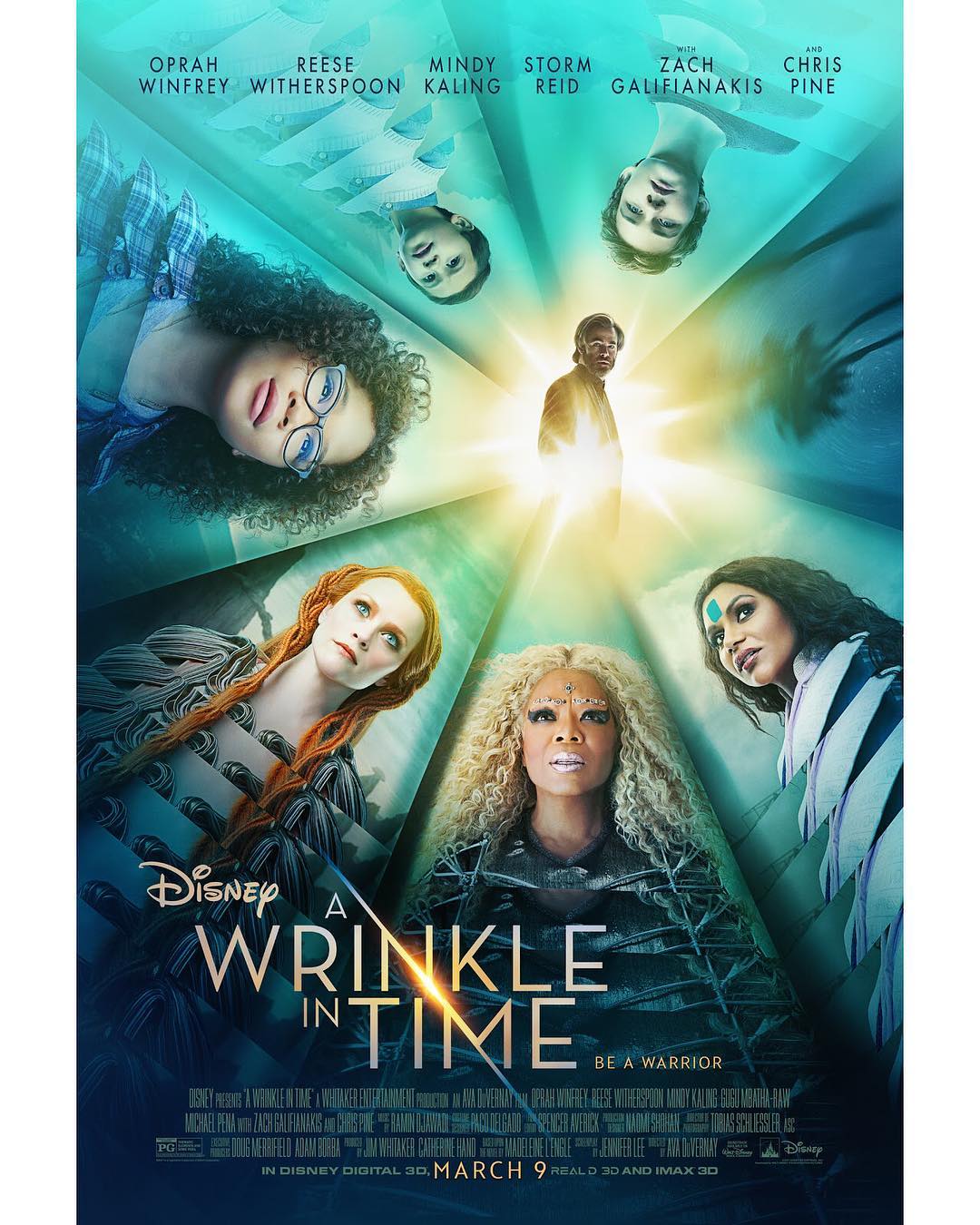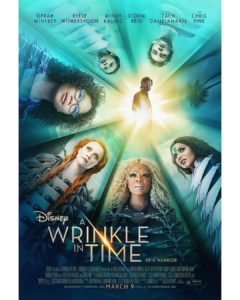I Feel Pretty
Posted on April 19, 2018 at 5:17 pm
B +| Lowest Recommended Age: | High School |
| Profanity: | Some strong and crude language |
| Alcohol/ Drugs: | Alcohol |
| Violence/ Scariness: | Comic peril and accidents, some graphic images |
| Diversity Issues: | None |
| Date Released to Theaters: | April 20, 2018 |
| Date Released to DVD: | July 16, 2018 |
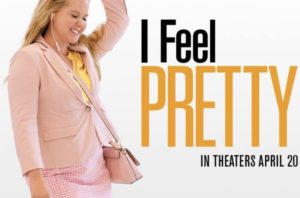
Amy Schumer shines in I Feel Pretty, an adorable fantasy that both draws from and slyly subverts the classic Cinderella story.
I’ve written before about the “makeover movie.” From the original Cinderella fairy tale to movies that range from “The Breakfast Club” to “Gigi” to “Clueless,” “Princess Diaries,” and “Now, Voyager.” There is something thrilling and akin to superheroic about the idea that a klutzy doof in glasses can be transformed into a capital B Beauty. And beauty has often been depicted as the primary power that a female character has, with an almost magical ability to control others, particularly men. This is the story of someone who thinks she has had that makeover but everyone around her — including us — knows that she has not.
Renee (Schumer) desperately wishes she could be “undeniably pretty.” She works for a cosmetic company, where most of the employees look like — or are — supermodels. 1960’s real-life supermodel-turned-actress Lauren Hutton plays the company’s founder, and it is now run by her granddaughter, Avery (Michelle Williams). Renee is convinced that if she could just be conventionally beautiful she would have all of the love, attention, and fun she dreams of. When she meets a model (Emily Ratajkowski) she asks whether just walking off a plane in another country leads to an invitation to a fabulous trip on a yacht with beautiful and wealthy people, and the answer is, well, pretty much yes.
And then one day, Renee has a SoulCycle accident and hits her head badly. When she regains consciousness, somehow she sees herself as the beauty she always dreamed of being. She is immediately and irrepressibly confident, which leads her to apply for a more visible job as the company’s receptionist and to flirt with the guy in line behind her at the dry cleaner shop. Both are very successful. But she is less successful with those who knew and loved her as the “old” Renee, her best friends (Busy Phillips, married to the film’s co-writer/director, and Aidy Bryant).
I’m a bit mystified that this film has had some blowback from viewers who see it as exactly what it is opposing — a body-shaming underscoring of rigid standards of beauty. On the contrary, this is the opposite of the makeover movie (including those listed above and many many others like “The Mirror Has Two Sides,” “Ash Wednesday,” “She’s All That,” and “Strictly Ballroom”), those films where a female character has to pretty up to be worthy of male attention. Makeovers are to girl movies what origin stories are to boy movies — they reveal a transformational source of power.
This movie makes it clear that everyone — from the beauty industry itself to the standards of guys who use online dating sites to screen romantic prospects on the basis of looks to the snooty attendants at the gym who seem to think you have to have a perfect body to work out — is trying to meet standards that are (1) superficial and (2) impossible. Some online commenters criticized the trailer for making fun of Schumer’s character for participating in the bikini contest. But like her date and the guy who runs the bar, the movie expects us to be charmed by Renee’s pure pleasure in participating and feeling good about herself, and we are.
Characters in the film include a cosmetics executive who could be a supermodel who is insecure about her ability and her childlike voice and an actual model played by an actual supermodel (Emily Ratajkowski) who has her own reasons for low self-esteem. It also makes it clear that confidence is itself an extremely attractive quality, as is consideration for and interest in others and competence on the job. And when Renee herself briefly is almost swept away over a man’s good looks (and his confidence), she realizes that it is character that matters. She learns that confidence in her looks can get her noticed, but being good at her job gets her respect. She also has to learn that too much confidence can be a problem when her joy in her new persona makes her inconsiderate to her friends.
There are elements in this story of Tom Hanks’ “Big” (which Renee watches) and “Never Been Kissed” (by the same screenwriter), and of the traditional cautionary fairy tale that wishes never turn out the way you hope.
It is fresh, funny, and heartwarming, with a genuinely beautiful performance by Schumer, ably supported by Williams, Bryant, Phillips, and Scovel, with some real insights about confidence, class, and empathy and a sparkle of romantic comedy magic.
Parents should know that this film includes some comic peril and violence including accidents with some graphic images, some strong language, and sexual references and a non-explicit situation.
Family discussion: Where is the line between being confident and being obnoxious? Why did strangers appreciate Renee’s new attitude while her friends did not? What did Renee see when she looked in the mirror?
If you like this, try: “Shallow Hal” and “Pitch Perfect”

